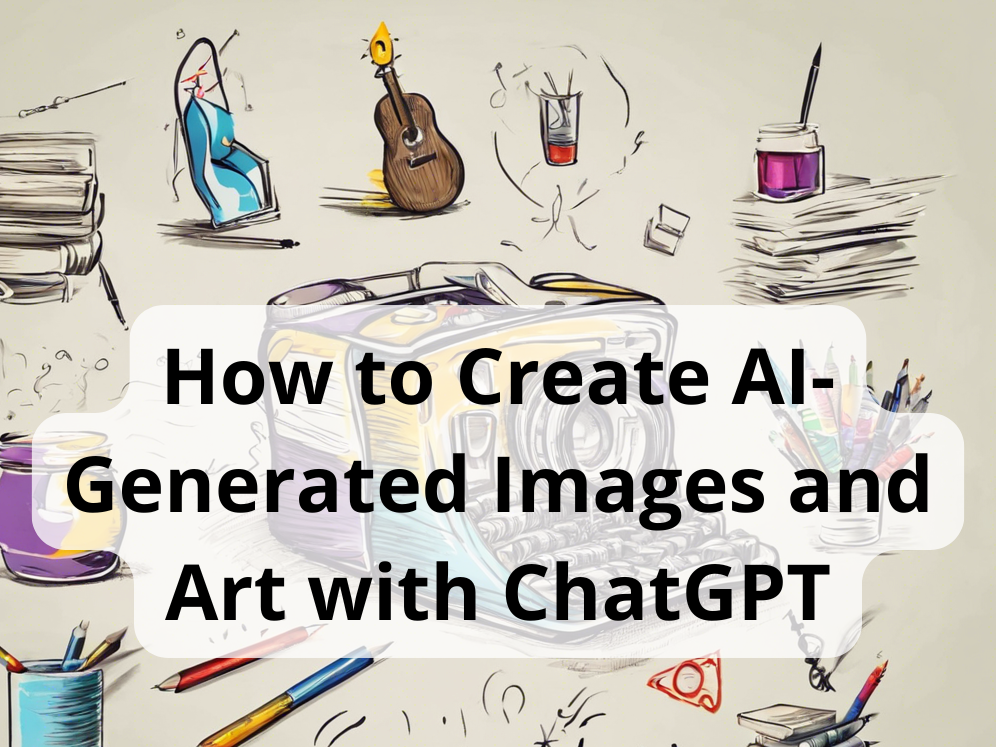
The response of artists to AI image generators has been divided. Systems that were mostly learned from images that were scraped from the internet- some of which were copyright-protected- have caused a lot of artists to react negatively. Some artists have welcomed the idea of using AI to develop mood boards for their own human-generated art and even sell AI-generated pieces. Learning about the ethical implications of art is essential, regardless of one’s position on the controversy.
Artificial intelligence (AI)-generated art and images blur the boundaries between cutting-edge digital tools and conventional creative processes. It’s the place where imaginary flora blooms in digital landscapes, where portraits turn into fantastical hybrids, and where abstract expressions move to the beat of algorithms. These tools bridge the gap between your imagination and a digital canvas by converting your written descriptions into colorful visuals.
Imagine an artificial intelligence system using complex computations to wield a paintbrush instead of a human hand. With the help of a wide range of data, this brush can create images that would astound even the most accomplished artist while fusing together pre-existing artistic styles and human input. Imagine whispering an idea, a story, or an emotive portrait in the AI’s ear and seeing it come to life on the screen.
Not only is AI-generated art a technological marvel, but it also opens up a whole new creative universe with a plethora of fascinating advantages for artists, spectators, and even the art community itself. Let’s explore a few of these hidden gems:
For the artists:
Artificial intelligence tools serve as creative collaborators, stimulating your imagination by putting forward novel ideas, combinations, and styles. Falling into a creative rut? Allow AI to cause a stir and inspire fresh thinking!
Put an end to tedious brushwork and late-night editing. Artificial intelligence can create stunning images in a matter of seconds, freeing up your time to refine your vision and weigh your options.
Attention to the audience:
See the emergence of previously unimagined realms and fashions. Artificial intelligence art challenges the conventions of traditional art, providing a visual feast and a mental shock.
Picture yourself as the proud owner of an artwork that captures your most imaginative or profound aspirations. Artificial intelligence (AI) tools for art can customize works to your own tastes, strengthening the bond between you and the piece of art.
AI art can communicate complex ideas, feelings, and narratives in ways that traditional art sometimes finds difficult to do. It can function as a visual language. It can be a very useful tool for understanding and communication.
Sequence-based prompts are prone to errors; although a poorly crafted prompt may elicit some amusement, crafting a precise and comprehensive prompt is necessary to ensure that the image is generated correctly the first time. It is also possible to request that ChatGPT write the prompt on your behalf.
1. To assist in creating your prompt, ask ChatGPT
Get ChatGPT to create a prompt for you if you are at a loss for words before going to the picture generator. Before moving further with the DALL-E integration, you can design your prompt with the aid of that AI chat interface.
2. Be as detailed as you can
Your chances of getting a usable image increase with specificity. Your chances of generating an image that closely resembles your imagined scene increase with the level of detail you provide in your prompt.
Keep the following in mind as you write your prompt:
Kindness: Would you like a picture? A picture that’s photorealistic? a watercolor? Make sure to include the kind of image you are after.
Persons: Don’t just say “person,” as that usually refers to a white man. Be more specific. Indicate details such as ethnicity and gender. What outfits do they have on? Are they doing what they are doing? Are they sitting? Are they standing?
History: Which background should there be? Does your requester work at a coffee shop as a computer typer? a disorganized home workspace? An opulent executive headquarters?
Brightness: Using harmonious color schemes can have a big impact on the final image’s mood. Which hue are the people dressed in? Which color is the furniture? The sky above a landscape.
3. Keep your vocabulary free of ambiguities
Artificial intelligence is limited in its ability to interpret word meanings, particularly those that are implied. I once attempted to transform a friend of my sister into Big Foot, for instance. But the AI image generator created a large foot. A more appropriate, if less humorous, word would have been sasquatch.
4. Incorporate your preferred aspect ratio.
Would you prefer a 1:1-square Instagram-sized picture? Which kind of image — horizontal or vertical — do you want? Include the aspect ratio in your prompt if the dimensions and orientation are important. Common horizontal ratios are 3:2, 5:4, and 16:9. The smaller number (4:5, 2:3, 9:16) appears first in a vertical image.
ChatGPT is essential in enabling AI-generated art production by offering text-based prompts and responses. The fusion of human imagination with artificial intelligence’s computational prowess marks an entry into the world of AI to create images and art. AI makes art, which is a groundbreaking fusion of traditional creative methods with state-of-the-art technology.
AI-driven tools act as creative collaborators, fostering new ideas and opening up new artistic expression possibilities, from fantastical hybrids in portraiture to abstract expressions directed by algorithms. Furthermore, AI art functions as a visual language, conveying narratives, complex ideas, and emotions in ways that traditional art may find difficult.
